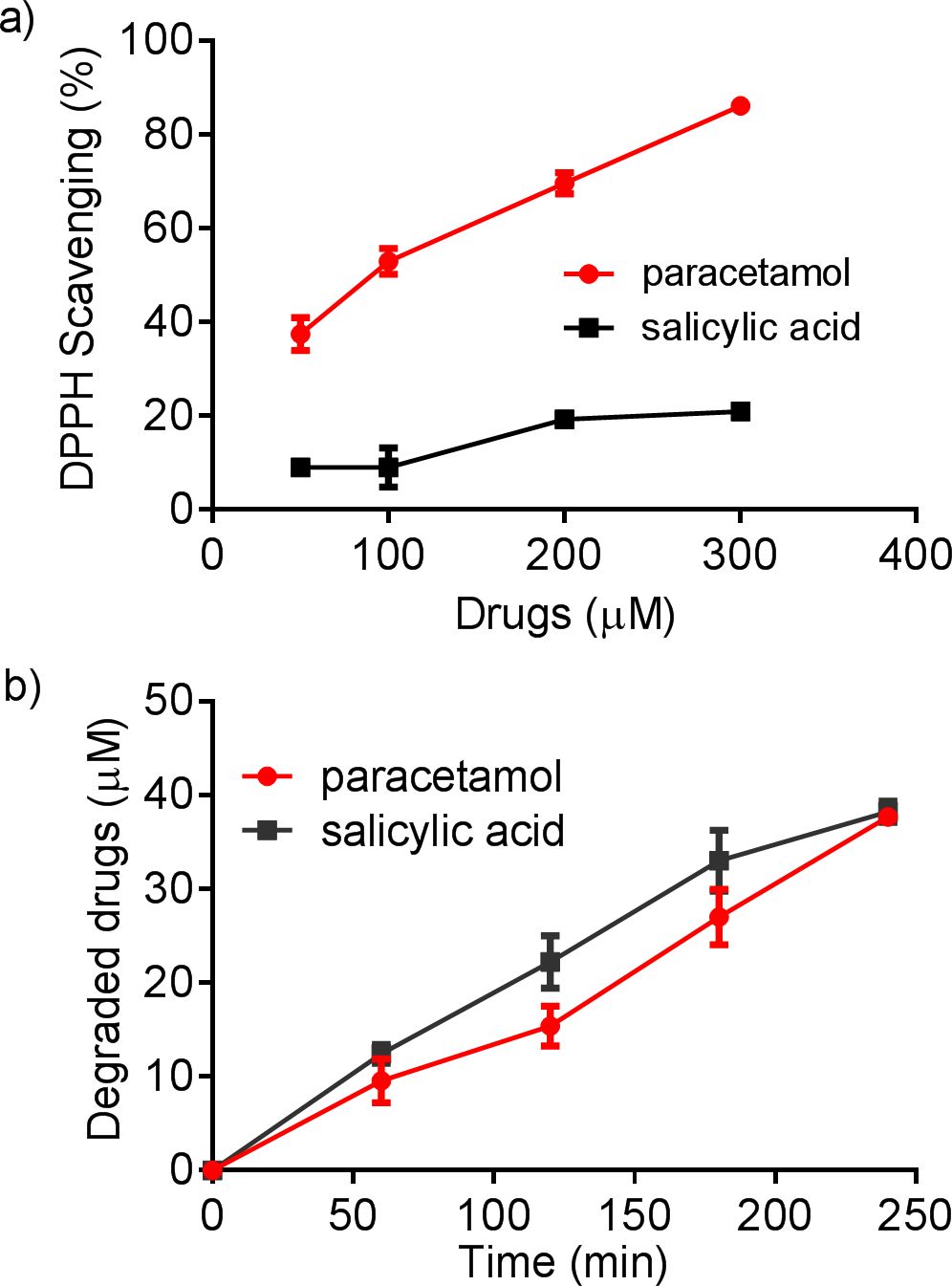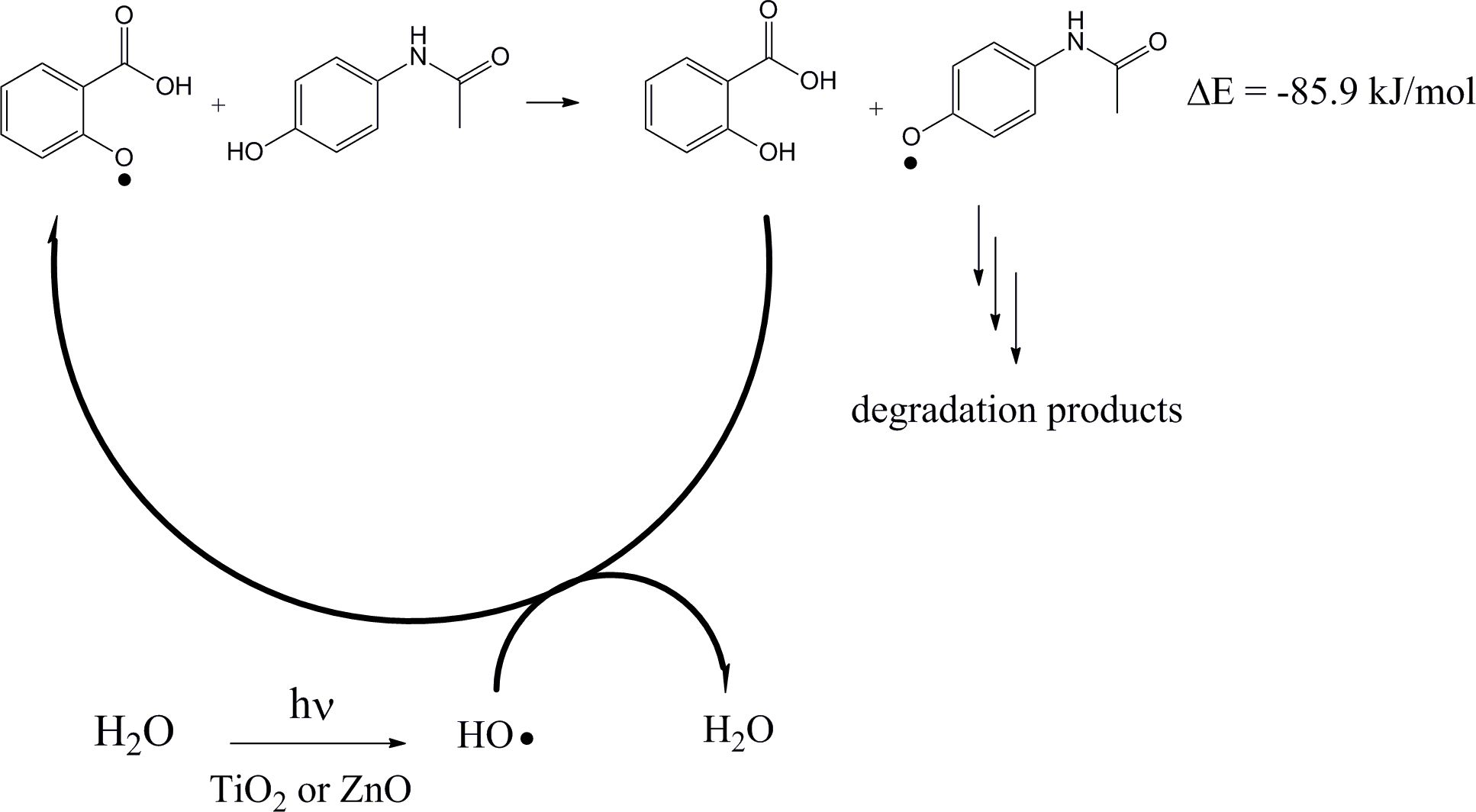Abstract
Titanium dioxide (TiO2) and zinc oxide (ZnO) are among the most used catalysts in photodegradation. Paracetamol and salicylic acid are widely used as pharmaceutical drugs. We found that paracetamol is less susceptible to photodegradation compared to salicylic acid. From a chemical perspective, this was not expected since paracetamol is more vulnerable to chemical oxidation. Aiming the comprehension of this phenomenon, studies were performed comparing the efficiency of photodegradation of paracetamol versus salicylic acid and acetophenone versus 4-aminoacetophenone. The presence of amino/amide group decreased the efficiency of degradation significantly. It was also found that salicylic acid improved the degradation of paracetamol when both compounds were present in the reaction medium. The lower efficiency of photodegradation of the amino-based compounds seems to be related to the deactivation of the excited states of the TiO2 and ZnO. Theoretical calculations at the TD-PBE0/6-311++G(3df,2p) high level were performed and corroborated our proposal.
Keywords:
Photodegradation; Titanium Dioxide; Zinc Oxide; Paracetamol; Salicylic Acid

 Salicylic Acid Boosts the TiO2 and ZnO-Mediated Photodegradation of Paracetamol
Salicylic Acid Boosts the TiO2 and ZnO-Mediated Photodegradation of Paracetamol Thumbnail
Thumbnail
 Thumbnail
Thumbnail
 Thumbnail
Thumbnail
 Thumbnail
Thumbnail
 Thumbnail
Thumbnail




